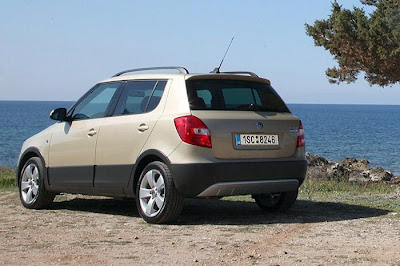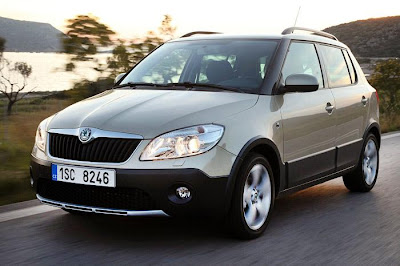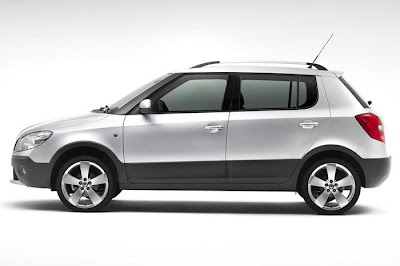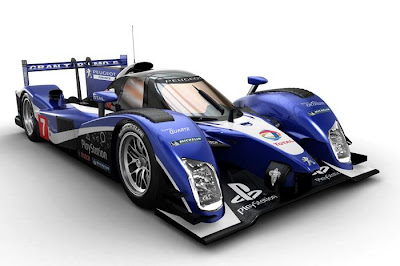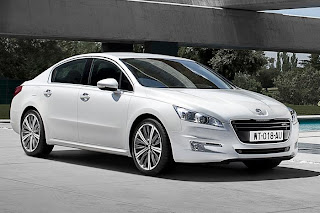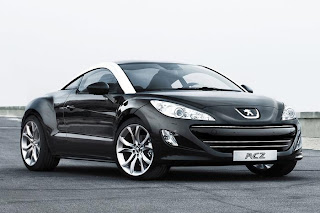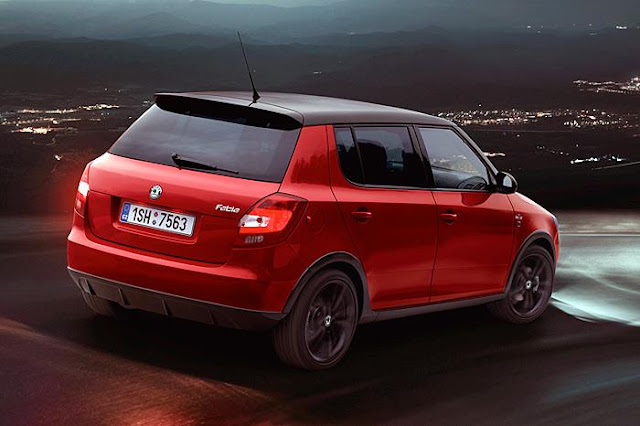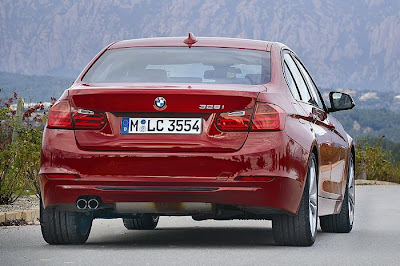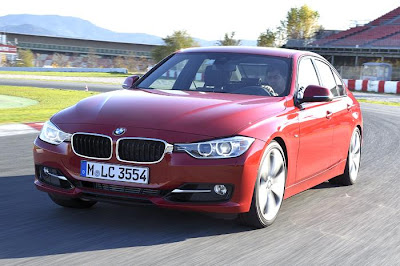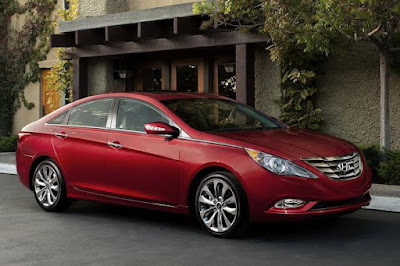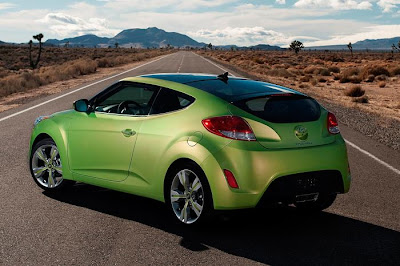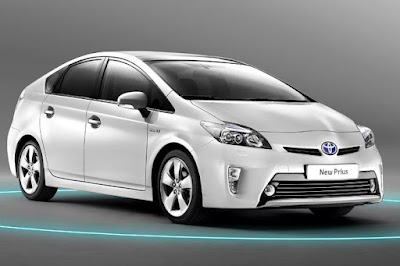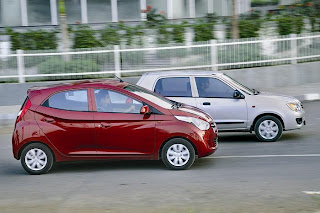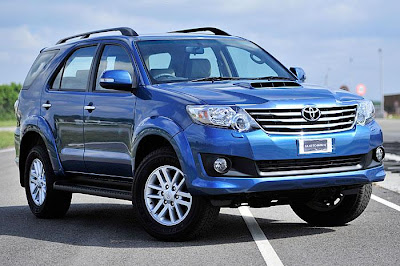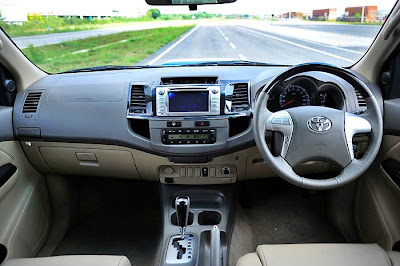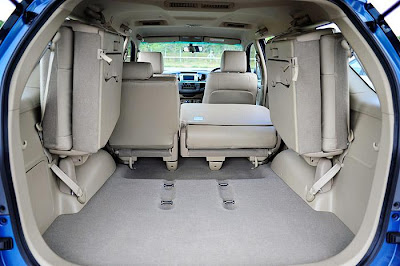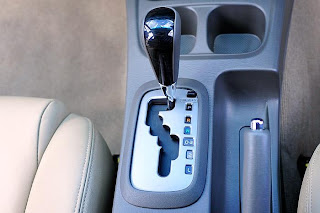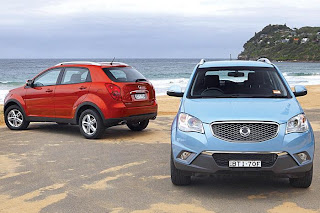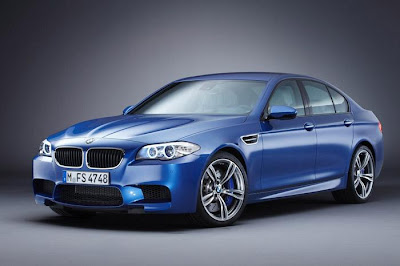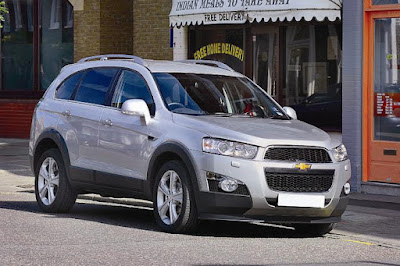JLR TO SHOWCASE A SLEW OF CONCEPTS
India is a home away from home for JLR since Tata Motors took the reins, so these iconic British brands want to put their best foot forward at the Expo to showcase what they are capable of.

MONTE CARLO EDITION Skoda fabia pics.
MONTE CARLO EDITION CELEBRATES 110 YEARS OF SKODA'S MOTORSPORT PROGRAM

FIRST DRIVE NEW BMW 3-SERIES REVIEW, TEST DRIVE
Testing a mainstream production saloon on a Formula 1 race track doesn’t serve any real purpose except to tell you how quick you (and the car) really are.

Mahindra 2 Wheelers' Auto Expo plans
Mahindra 2 Wheelers will showcase its 2012 Moto3 bike and launch the Duro DZ scooter in Delhi at the Auto Expo 2012.
Mahindra racing ended third in the Constructors’ Championship in its debut 2011 season. It had taken the covers off its new 250cc Moto3 entry for the 2012 season earlier in Valencia. This will be the first time that the bike will be unveiled in India.
Mahindra has already launched the Duro DZ in South India and this will be the official launch of the bike in the nation’s capital.
Speaking on the upcoming Auto Expo, Anoop Mathur, President, Mahindra 2 Wheelers said, “The Delhi Auto Expo is the perfect platform to unveil Mahindra Racing’s new Moto3 challenger, the MPG30 (pronounced three-oh). Similarly at Mahindra Two Wheelers, we have significantly enhanced our technological capabilities to introduce high performance two wheelers like the new Mahindra Duro DZ scooter that we have recently launched in the South.”
Peugeot to unveil future models
Feast your eyes on the 2011 championship-winning Peugeot 908 LMP1 Le Mans car. The blindingly quick Le Mans prototype weighs approximately 925kg and develops 550bhp from its 3.7-litre V8 diesel unit. At the 24 Hours of Le Mans, the 908 grabbed three of the top four spots, coming second only to the Audi R18.
Alongside the Le Mans racer will be Peugeot’s first car for India – the 508. This will be the French carmaker’s flagship model in India and Peugeot realises the importance of having a diesel variant, so the first engine will be a 1.6-litre diesel developing 112bhp. It will be interesting to see how Peugeot prices the 508, which needs to cost less than a Honda Accord to succeed in India. Styling-wise, Peugeot’s designs should abide well with Indian tastes compared to the quirky styling of its French counterpart, Renault. Peugeot will also display the RCZ sportscar at the Expo.
Is Peugeot ready for its second innings in India? Its Rs 4,000 crore investment in Gujarat surely suggests so.
FIRST DRIVE New BMW 3-series review, test drive
Testing a mainstream production saloon on a Formula 1 race track doesn’t serve any real purpose except to tell you how quick you (and the car) really are. You don’t just cruise from apex to apex but end up driving the wheels off whatever you’re piloting. So the first couple of hot laps of the Catalunya circuit in Spain were enough to reveal how far forward BMW has taken the new 3-series’ driving dynamics and why it is still the master of the class.
The incredible chassis balance and the sheer fluency with which the new 3-series handles makes you flip for it instantly. It’s the delightfully neutral attitude through corners that makes the 3-series feel so special. Turn-in is deliciously sharp and the complete lack of understeer is just astonishing. With Sport+ mode selected, you can play with the throttle to tighten your line. And then there’s the steering. Unlike its predecessors, the new 3’s steering has a natural, fluid feel that is hard to associate with electrically powered units. It may not weigh up as much as you would like when you lean into corners but the delicate balance between effort and accuracy is what makes this steering truly brilliant.
But the true genius of the 3-series lies in its ability to mix sportiness and comfort in equal measure and without any compromise. And the key to this is actually a button which resides on the centre console. Standard on every new 3-series is the Driving Experience Control system — BMW-speak for a wide range of driving modes you can choose from. This system, though already available on the 5- and 7-series, is further enhanced for its 3-series debut by also offering an ‘Eco Pro’ mode, which tweaks the throttle map to eke out the best fuel economy.
The first thing that you become acutely aware of is the fantastic ride quality. Over uneven tarmac, in Comfort mode, the 3-series feels like its gliding, the quiet interiors adding to the almost eerie feeling. We are guessing this will be the default setting when it comes to India, but if you are fortunate enough to live in a place where the roads are open and good then the Sport and Sport+ modes are the ones to play with.
In Sport mode, the 3-series instantly feels more responsive. The steering, throttle and gearbox feel sharper and this sense is further enhanced in Sport+ mode, where the traction control switches to a more entertaining setting. What’s amazing is that, except over sharp ridges and bumps, the new 3-series is pretty comfy even in the stiffest Sport+ setting. The other revelation is the latest-generation run-flat tyres, which are no longer ride-corrupting, and this should finally silence the critics; us included.
BMW made available two of the four engine options at the International launch, and both of these are expected in India. The 320d gets the familiar 1995cc motor developing 181bhp from the previous 3-series, but it’s the 328i which gets an all-new, twin-scroll turbo, direct-injection petrol engine. This compact 2-litre, in-line four, replaces the naturally aspirated 3-litre, in-line six. It develops 242bhp, which means the 328i is marginally less powerful than the outgoing 330i, but it produces 16 percent more torque and being 45kg lighter, it’s actually quicker. Also a first on the 3-series is the same ZF eight-speed gearbox with paddle-shifters which debuted on the 5-series (though it was first seen on the 760Li), with an auto stop-start function as an option.
We first had a go in the 328i and immediately noticed there’s virtually no turbo lag. This engine pulls cleanly and hard from low revs and the quick-shifting eight-speeder complements the wide torque spread to give an instant burst of acceleration at any speed. In Sport and Sport+ mode, the transmission hangs onto lower gears much longer but even in the Comfort setting the brilliant engine-gearbox combo makes light work of any drive. If there’s a fault it’s the bland-sounding exhaust note and that ultimate creaminess at high revs you can only get with a six-cylinder. For that, you will have to wait for the 335i which will follow the 328i into India.
As you’d expect, the 320d is slower on paper than the 328i and this was most obvious on the Catalunya track. But on the road, the diesel 3-series packed quite a punch and the strong mid-range makes it feel more potent. At high revs the engine has that familiar gruffness and is not the most silent of diesels but that’s not to say the noise is obtrusive.
The cabin is also a step up from before with a noticeable increase in legroom at the rear and better overall comfort, but it doesn’t wow you like the rest of the car. Though the interiors have a sharper design and quality details abound, it has the same understated feel that is a bit too functional. The dashboard is more driver-oriented than before, with the centre console tilting slightly inwards, and there are lots of bits borrowed from the 5-series like the switchgear and other controls.
In fact, underpinning the brand new chassis is a lot of 5-series architecture. The 3-series gets double wishbones in the front for the first time and a multi-link Z-axle at the rear. The platform has also been engineered to accommodate four-wheel-drive variants.
If the way the 3-series drives doesn’t excite you enough then the styling certainly will. This sixth-generation (F30) 3-series is bigger and more muscular than before and you just can’t miss the distinctive bonnet that bulges forward, or the stunning headlights which extend inwards to meet the squat kidney grille. Double swage lines that run under the base of the window and along the door-handle line are another great piece of design detail. The rear looks more straightforward but the wider track gives it a nice, squat stance.
It was really hard to fault the new 3-series but a more critical evaluation can only be expected when the car hits Indian shores before the middle of 2012. For BMW’s rivals, that’s a breather they need to make the most of. For customers it’s time to muster the approximately Rs 26 lakh asking price for the base 320d or around Rs 35 lakh (both ex-showroom) if you fancy the top-spec 328i. This is one car that’s going to be hard to beat.
Fact File
Price Range (in lakhs)*
| Ex-showroom price | Rs 35 lakh (petrol), 26 lakh (diesel) (est. ex-showroom) |
Engine
| Fuel | Petrol, diesel |
| Installation | Front, longitudinal, RWD |
| Power | 242bhp at 5000-6500rpm (petrol), 181bhp at 4000rpm (diesel) |
| Torque | 35.69kgm at 1250-4800rpm (petrol), 38.75kgm at 1750-2750rpm (diesel) |
Transmission
| Gearbox | 8-speed automatic |
Dimensions
| Length | 4624mm |
| Width | 1811mm |
| Height | 1429mm |
| Wheel base | 2810mm |
| Boot volume | 480 litres |
Chassis & Body
| Weight | 1430kg (Petrol)/1430kg (Diesel) |
Tata Nano to get upgraded starter motor
Tata Motors has announced a ‘replacement exercise’ for all Nano models except the recently launched 2012 Nano.
As part of this exercise, Tata Motors will replace the starter motor with the one that comes in the 2012 Nano. This will be done free-of-cost and will affect about 1.40 lakh customers nationwide, and will cost Tata Motors about Rs 100 crore. According to Tata Motors, there is no formal safety hazard that has been associated with the old starter motor and the upgrade is being done to enhance the car’s realibility.
New Hyundai Sonata launch at Expo
Hyundai’s striking design efforts of late should make the Korean carmaker’s hall a huge attraction. Treat yourself to the absolutely stunning Veloster coupe, another class example of Hyundai’s fluidic design language. Oodles of sex appeal aside, the Veloster has a 1.6-litre petrol engine developing 138bhp and a raft of safety features like ESC, ABS, TCS, Brake Assist and six airbags. The Veloster sports an unusual 1+2-door layout where the passenger side has an additional rear suicide door.
Hyundai will also unveil a new concept car to the world called the HND-7. The company hasn’t revealed any information yet about it so you are in for a big surprise. The new Sonata that’s being geared up to replace the current-gen Transform gets the perfect stage for its India debut. Arguably the best looking Hyundai to date, it should be lapped up by executive car buyers in India. It’s not one for the enthusiast though, so don’t expect corner-carving capability, but rather chauffeur-driven comfort instead.The second surprise from Hyundai will be a new SUV concept. It’s in the Rs 8-10 lakh range and is likely to be based on one of Hyundai’s existing platforms. The company wants to plug every gap in its portfolio so this Expo is a peek into Hyundai’s not-so-distant future in India.
XUV500 to be dearer by Rs 55,000
Three months after its launch, the Mahindra XUV 500 will see its first price revision from January 1, 2012. The quantum of hike will be Rs 30,000 for the base W6 variant, Rs 50,000 for the W8 2WD variant and Rs 55,000 for the W8 4WD variant.
Currently, the XUV 500 W6 is priced at Rs 10.8 lakh, W8 2WD retails at Rs 11.95 and the top-end 4WD W8 variant is available for Rs 14.16 lakh, ex-showroom, Delhi. For all the current bookings, for which deliveries have not been made, the increase would only be 50 percent of the announced price hike.
M&M says the prices have to be increased as they were ‘introductory invitation price’ and there has also been a considerable impact of increase in raw material costs and the rupee depreciation with respect to dollar and euro.
The production for the XUV5OO is as per schedule and the company is also in the process of further ramping up production at its plant in Chakan which will enable it to re-open bookings in January 2012.
M&M received 8,000 bookings for the XUV 500 within a fortnight of its launch. The company started the SUV’s production at a level of 2,000 units per month and is ramping up production to reach 4,500 units per month by June, 2012.
Audi Q3 to be revealed at the Expo
Come January 2012, Audi will cater to every type of visitor with its wide range of models at the Auto Expo. At one end is theQ3, the affordable compact SUV, while at the other is the camera-magnet R8 Spyder.
This will be the Q3’s Indian debut and it will first be launched in mid-2012 with Audi’s Quattro four-wheel-drive system. Two engines will be offered, a 2.0-litre TFSI turbo-petrol developing 211bhp and an entry-level 176bhp, 2.0-litre turbo-diesel which should form the bulk of sales in India.
The brutish RS5 and the 5.2-litre V10 R8 Spyder will turn up the heat at the Audi stand so make sure you have your cameras ready. There’s even something for performance-seekers for whom a rakish coupe is grossly impractical – the new S6. It has a 414bhp, 4.0-litre twin-turbo V8 under the hood and is capable of hitting 100kph in less than five seconds. What’s disappointing, though, is that the facelifted A4 won’t make it to the show even though its launch is expected in the first quarter of 2012.
Green credentials are a must these days, so balancing out the masses of horsepower on display will be the A3 E-Tron concept. The sleek and sexy plug-in hybrid has a 211bhp 1.4-litre TFSI motor coupled with a 27bhp electric motor. Audis served as a buffet then, pick your dish.
New Toyota Camry, prius, innova, fortuner launch at the Expo
Toyota will reveal a completely new face at the Expo, quite literally. A facelifted Innova, Fortuner, Land Cruiser, Prius and an all-new Camry will be displayed in the Toyota hall.
The bold new Camry will be launched at the Auto Expo. The Japanese carmaker plans to assemble it from CKD kits so prices should drop considerably. A more refined 2.5-litre 174bhp VVT-i petrol engine mated to new six-speed manual and automatic transmissions will be the other changes to the Camry.
See images of the new Toyota Camry
The largest selling green car in the world too gets a facelift. Toyota will display the facelifted Prius that looks much sharper than the current model. The front bumper gets a larger air dam and an extra set of fog lamps. The lamp cluster in the headlights has been redesigned as has the detailing of the tail lamps. The dashboard gets a touchscreen and a new layout that looks a lot livelier than on the current Prius.
See images of the face-lifted Toyota Prius
The facelifted Innova has been substantially redesigned and now sports new headlights, front grille, bumpers and alloy wheels. The interior too has been spruced up with new upholstery, dashboard tones and a DVD player. These changes are carried out to target private car buyers looking for an attractive MPV.
See detailed images of the updated Toyota Innova
The Fortuner too comes under the surgeon’s knife. The macho SUV has been a runaway success in India but Toyota isn’t resting on its laurels. In order to maintain its lead in its segment, Toyota has updated the Fortuner’s styling to include a wider chrome front grille, sharper looking new headlights, and a restyled front bumper among other things. A two-wheel-drive automatic variant has been added to its range too. There will also be a modified Corolla for the physically challenged at the Expo.
See images of the face-lifted Toyota Fortuner
Further up the ladder, the Land Cruiser too receives a facelift. The fresh new face of Toyota makes the stand a must-visit at the Expo.
Ferrari pushing for F1 testing increase
Ferrari is pushing for an increase in testing in Formula 1, with its president Luca di Montezemolo claiming that it is crucial for the development of young drivers.
From 2009-2011, in-season testing was banned outright with pre-season running heavily limited. In 2012, there will be one test at Mugello on May 1-3, following the early-season flyways. But there is no net increase in test days as these were taken from the usual pre-season allocation of 15.
Di Montezmolo underlined that he is still in favour of test restrictions, but that the current limits are too harsh and prevent rising stars from being properly evaluated.
"I was in favour of reducing the number of tests because we went too far [before]," he said. "But there has to be something in the middle. It is strange that one of the most professional sports in the world doesn't allow the players to practice.
"This is bad for our drivers. We have the Ferrari Academy, with some potentially good new drivers and I can't make them race GT cars or a go-kart. Giancarlo Fisichella is a good driver in F1 but when he went to GTs, for the first three or four races Gianmaria Bruni and Jaime Melo were far quicker in the Ferrari 458. It's different to a single-seater."
Di Montezemolo also questioned the effectiveness of such rigid test restrictions in terms of cost saving, pointing out that Ferrari agreed to restrictions because of the financial struggles of the smaller teams in F1. Ferrari has also had to invest heavily in new technology such as simulators to replace track time.
The simulator is one area in which Ferrari is believed to be a little less advanced than some of its rivals, despite making huge progress in recent years. That means that it's likely that the team would benefit from increased running in terms of car development. Despite that, di Montzemolo denied that Ferrari's on-site track, Fiorano, would be a major advantage as it is no longer suitable for F1 testing.
"I'm not allowed to test in Fiorano, but I'm forced to invest a huge amount of money in the simulator," he said. "You can see that the simulator is like a building.
"And Fiorano is not an advantage any longer because it has become a go-kart track. Mugello is fantastic, but not Fiorano [for F1 testing]."
Di Montezemolo added that testing also offers teams the opportunity to entertain corporate guests outside of race weekends, something that is crucial to the economic health of the outfits.
He believes that further tests would also boost media coverage between races.
"We are facing a big crisis and we have to give value to the sponsors," said di Montzemolo. "Testing is a possibility to organise events and entertain clients outside the races. F1 must be marketing oriented.
"We have 100 circuits in Europe without being allowed to test. In Italy, we could race at Monza and test at Mugello, for example, or in Britain race at Silverstone and test at Brands Hatch.
"It would also be good to have more presence for F1 on TV and in the media as well as for sponsors and for the tracks."
Hyundai Eon vs Maruti Alto
The Maruti Alto is India’s best-selling car by far. An affordable price tag is just one of many reasons why, but the fact is the Alto gets the basics right. It’s fuel efficient, easy to use and requires minimal maintenance – with the comfort of knowing if anything does go wrong, a Maruti service station is never too far away. Last year’s K10 model only added cubic capacity and horsepower to the Alto’s cheap, cheerful and hassle-free charm.
However, just one glance at the new Hyundai Eon will have even die-hard Alto fans raising an eyebrow. After all, the Eon is priced close to the Alto K10, with a similar promise of low running costs and service backup second only to Maruti’s. But does the Eon deliver where the Alto excels?
It’s all in the look
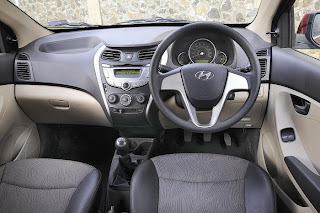 The Maruti Alto K10 is the longer car, but the Eon is taller and its wheelbase is 20mm bigger too. But where the two cars really differ is in styling. The extroverted Eon looks designed for tomorrow with beautifully sculpted creases and cuts. The large rear wheel arches do make the wheels appear small but that’s about it. There’s little to find fault with in the design. Even the crescent-shaped tail lamps look great. The best part is that the Eon is distinctive without looking too radical.
The Maruti Alto K10 is the longer car, but the Eon is taller and its wheelbase is 20mm bigger too. But where the two cars really differ is in styling. The extroverted Eon looks designed for tomorrow with beautifully sculpted creases and cuts. The large rear wheel arches do make the wheels appear small but that’s about it. There’s little to find fault with in the design. Even the crescent-shaped tail lamps look great. The best part is that the Eon is distinctive without looking too radical.Standing next to the Eon, the Alto looks several generations older. That’s because it is. Not much has been changed since the car was launched in 2000 except for a nip and tuck with the introduction of the K10 model in 2010. However, the basic shape is the same, and the thick C-pillars and smart creases over the rear wheels are the only talking points really. The Alto anonymously blends into the crowd while the Eon stands out, even in the company of larger, more expensive cars.
Fit and finish of the Eon’s cabin is midsize-saloon-car good and there are only a few bits that remind you of its small price. Dashboard styling is neat and the chunky AC controls are particularly nice to use, but the small central vents are fiddly and have limited spread. Frontal visibility is slightly hampered by the thick A-pillar and the small glass area at the rear doesn’t help either. The Alto, in contrast, affords better all-round visibility. The Eon’s front door pockets are large enough for bottles and the glovebox is big too.
Switching to the Alto is like going back in time. Plastic quality is a grade down on the Eon’s and panel gaps mean the Alto looks every bit the budget car it is. The front door pockets are narrow and shallow and items tend to slide around the dash-top recess. The glovebox is also small but you do get two cupholders, and the boot is a full size down on the Eon’s generous 215 litres.
The Eon’s rear seat has more kneeroom than the Alto’s and more space under the front seat to move your feet. The Alto’s shorter backrest equals insufficient support, while its protruding, fixed headrests are uncomfortable. The Alto does have slightly more headroom. Build quality is somewhat flimsy compared to what you get on the Eon.
Each CC Counts
The Eon is powered by a 3cyl version of the Santro’s 1.1-litre iRDE engine, reducing engine displacement to 814cc and power output to 55bhp. Expectedly, engine refinement isn’t great and vibrations shake the gear lever a fair bit. The Eon isn’t particularly quick off the blocks and only pulls well towards the top-end. There is adequate power for keeping up with typical city traffic but overtaking manoeuvres need some planning. Flooring the throttle doesn’t help as the engine simply doesn’t make power quick enough.
In contrast, the Alto K10’s 996cc, 67bhp twin-cam engine shows just how good a three-cylinder can be. There are some vibrations at idle but these fade as you accelerate. Both engines get quite loud when revved but the Alto’s precise-shifting gearbox feels a whole lot nicer to use than the Eon’s notchy unit. The two cars are neck-to-neck upto 60kph, but the Alto reaches 100kph nearly 2sec before the Eon.
But the numbers most buyers will be interested in are for fuel economy. The Eon’s narrower powerband means you change gears more often than on the Alto and that reflects in its slightly lower city economy figures. The Eon managed 13.7kpl while the Alto returned a 14kpl. Out on the highway, the Eon’s taller fifth gear allows the better fuel economy of 17.2kpl to the Alto’s 17kpl figure.
Rock and Roll
Their dinky dimensions, small turning radii and light controls make both cars very easy in the city. Suspension hardware is similar and both cars ride on 13-inch wheels. The Eon is softer-sprung and does the better job of shielding passengers from low-speed bumps. Go any faster and it is the Alto that feels far nicer, with less body movement and a much flatter ride. However, rear seat passengers do get thrown about a fair bit in the Alto.
Feature creature
The Alto VXi retails for Rs 3.2 lakh (ex-showroom, Delhi) and comes with power steering, front power windows, central locking and internally adjustable outside rear-view mirrors. For Rs 20,000 more, you can get the Eon Magna variant that comes with all of the above and also a steering tilt adjust. This model, however, does without a parcel tray or tachometer, both of which are available on the Alto. At Rs 3.71 lakh, the Eon Sportz variant featured here is quite expensive but comes with a lot of kit. You get a driver-side airbag, keyless entry and also a CD player with Aux and USB functions.
Decision time
We really scratched our heads over this one. The thing is, the Alto is unquestionably the better car to drive. It has the more consistent ride, nimbler handling and zestier engine. If the engine’s ability holds more weight for you than the plush ambience in the driver’s seat, then the Alto is the car for you. It has a certain raw appeal that the Eon just can’t hope
to match.
to match.
No, the Eon’s performance won’t get your heart racing and engine refinement is rather mediocre too but for most buyers these are secondary considerations. The Eon delivers on more visible criteria. It looks futuristic, its better-finished interiors look and feel classier and it is that wee bit more spacious too. Fuel economy is really good as well.
In the final analysis, you do pay more for an Eon but in return get more bang for your buck. It’s just too hard to argue against its value quotient and it is for this the Eon is our choice.

Tata to showcase Pixel at Expo 2012
Tata Motors will showcase the Pixel city car concept at the 11th Auto Expo in Delhi.
The Pixel concept, which made its debut at the Geneva motor show in February this year, is based on the Nano, but has been developed mainly for European markets. It’s just over three metres long, and when it reaches India two years from now, will be up against the likes of the Maruti Alto. Like the Nano, the Pixel will be rear-engined, but will be powered by a three-cylinder petrol and a turbo-diesel.
The design and engineering - the work of Tata’s in-house engineers - incorporates scissor doors and a large glass area, including a panoramic roof. It gets a unique rear-wheel counter-steering system that gives the Pixel a turning radius of just 2.6 metres. The Pixel will form the basis of the next-gen Tata Nano, which is expected not before 2015.
Tata is also in the process of developing hybrid and electric versions of the future Nanos to help it meet future European emissions norms.
However, what’s not making it to the Tata Motors’ stall is the much-speculated diesel powered Nano. Although development on the Nano diesel is complete, the company is holding back the launch. This is a strategic move from Tata Motors, which is keen to push sales of the much-improved Nano 2012, which has been clocking good volumes, in recent months.
We expect the Nano diesel to be launched not before 2013, powered by an 800cc, 2-cyl 45bhp diesel motor.
FIRST DRIVE New Fortuner Auto review, test drive
Come January, Toyota will widen the Fortuner line-up with the introduction of a pair of new two-wheel drive variants. We have just driven the automatic-transmission variant and can tell you there is much to get excited about.
But before we get into how the SUV drives, lets take a look at what else is new. For starters, frontal styling gets a major revamp. The larger grille, angular headlights and restyled front bumper do their bit to make the Fortuner look even more Land Cruiser-like than before. There is also a wider intake for the intercooler on the bonnet and new design for the alloy wheels. At the rear, you can identify the new Fortuner by its clear-lens tail lamps.
Inside the cabin, the redesigned centre console now features a six-inch touch-screen (shared with the Corolla and new Innova) which controls and displays the audio system, new DVD player and reverse camera. The steering wheel is also new and now comes with controls for the new Bluetooth telephony function.
The Fortuner’s already comfy front seats now get a six-way power adjust that makes it really easy to find the perfect driving position. Drivers will also notice the revised ‘Optitron’ dials that remain easy to read as before.
Detailed inspection over, time to get moving. Slot the gear lever in D, depress the accelerator and it doesn’t take much time to realise the four-speed torque-converter gearbox complements its torquey 3.0-litre D4-D engine quite well.
Gearshifts are smooth and the ratios are well suited to typical city driving. The ’box is also quite responsive for the most part; yes, there is a mild hesitation to downshift but that is only apparent when you need instant power.
Driving on tarmac there is little to differentiate the two-wheel-drive Fortuner from its four-wheel-driven counterpart. If anything, the steering feels marginally lighter now. The smooth 168bhp engine is as tractable as before and the seamless build of power makes the Fortuner effortless to drive.
As a product, it makes immense sense for city-based buyers to whom SUVs are more a status symbol than a tool for going off-road. While prices are yet to be announced, the Fortuner 2WD automatic will be priced lower than the 4WD model on sale today. Be prepared to see a lot more Fortuners on the road.
Also read: Face-lifted Toyota Innova review
Fact File
Price Range (in lakhs)*
| Ex-showroom price | Rs 20 lakh (est. ex-showroom, Delhi) |
Engine
| Fuel | Diesel |
| Installation | Front, longitudinal |
| Type | 4 cyls in-line, 2982cc, common-rail, direct injection, turbo-diesel |
| Bore/stroke | 96.0/ 103.0 |
| Power | 168bhp at 3600rpm |
| Torque | 35kgm at 1400-3400rpm |
Transmission
| Type | Automatic |
| Gearbox | 4-speed |
Dimensions
| Length | 4705mm |
| Width | 1840mm |
| Height | 1850mm |
| Wheel base | 2750mm |
| Ground clearance | 220mm |
Chassis & Body
| Construction | Body on ladder frame, five-door SUV |
| Weight | 1885kg |
| Wheels | Alloy |
| Tyres | 265/65 R17 |
| Spare | Full size |
Suspension
| Front | Independent, double-wishbone, coil-springs |
| Rear | Non-independent |
Brakes
| Front | Ventilated discs |
| Rear | Drums |
| Anti-lock | Yes |
Mahindra to showcase SsangYong range, EVs
Mahindra & Mahindra is to display two models from its newly-acquired SsangYong brand – the Korando crossover and Rexton SUV – for the first time in India at the forthcoming Auto Expo.
The Rexton is a typical old-school SUV based on the tried-and-tested mechanicals of the first-generation Mercedes M-class. It is powered by a 2.7-litre five-cylinder turbo-diesel motor developing 162bhp and 34.8kgm of torque via a five-speed automatic gearbox.
The Korando, a soft-roader built on a monocoque platform, is powered by a 173bhp 2.0-litre turbo-diesel engine and comes with a six-speed automatic gearbox.
Auto Expo launch for new BMW M5
EXCLUSIVE!
Like all previous M5s, the new car's styling is subtle but aggressive in its details, most notably the lower air intakes – three gaping ducts to flow cool air into the radiator, oil cooler and turbochargers. 19-inch alloy wheels come as standard fitment.
The M5 features a twin-turbo, 4.4-litre V8 that offers 552bhp and 69.4kgm of max torque, and the sports saloon can hit 100kph in 4.4 seconds, and 200kph in 13sec (manufacturer’s claims).
The new M5 gets a power boost of 10 percent and torque figures are up by 30 percent compared to the previous-generation, V10-powered E60 M5.
The transmission is a seven-speed, dual-clutch unit with steering-wheel-mounted paddle-shifters, which drives through a new Active M differential with electronically-controlled, multi-plate, limited-slip differential. Depending on the driving situation the diff can lock between 0 and 100 per cent, says BMW.
An M-specific chassis set-up includes M-tuned Servotronic steering, cockpit-adjustable dynamic damping and stability control with an ‘M Dynamic’ setting.
Steering wheel buttons that can be programmed with chassis, engine and diff settings can now memorise two individual set-ups as compared to the single setting option on the earlier M Drive button.
The all-new BMW M5 will be priced at Rs 99 lakh (est. ex-showroom) and will be launched in India at the Auto Expo 2012.
FIRST DRIVE New Chevrolet Captiva review, test drive
With the new Captiva, which is a heavily face-lifted version of the original model, GM believes it now has muscle to steer buyers into its showrooms. Look at this refreshed SUV head-on and you will tend to agree. The massive new grille has completely transformed the car and perhaps addressed the Captiva’s biggest weakness – that it just didn’t look SUV enough. The two-part grille, split by a thick strip on which the Chevy bowtie sits, is the now-familiar signature of modern Chevys. The fog lamp housings look much neater too and the headlamps are more striking than before.
Other interesting details are the re-shaped side air vents, a chrome strip for the window line and turn signals integrated into the mirrors. The muscular wheel arches with protective mouldings are bigger than before to accommodate wheels ranging from 17 to 19 inches. For the Indian market however, it’s likely the 17-inch option (to match higher profile tyres) will be offered. The Captiva’s rear is unchanged and, not surprisingly, is the least interesting part of the car with its rather generic lines.
The interiors are largely carried over too but GM has made some clever design changes to give the cabin a significant lift. The centre console is sharper, better sculpted and has angular vents that give it a sportier look. The large, seven-inch screen is functional, especially with the increased proliferation of navigation systems. GM India is likely to offer the new Captiva with a GPS navigation option on the higher-spec version.
The instrument cluster is completely new as well and unlike the previous model, the speedo and tacho sit separately and are much easier to read. The new Captiva gets an electrically operated parking brake which is controlled by a small switch on the base of the centre console. The space vacated by the handbrake lever has been taken up by dual cup holders that slide underneath the central armrest.
Plastic quality is much improved and feels plusher than before but for a Rs 20-lakh vehicle, it’s still not good enough. There are still lots of shiny, hard bits which take a lot away from the cabin ambience. The switchgear though is pretty decent and gear lever and steering feel better to hold too. The quality level is better than the XUV500’s but the Captiva still can’t match European or Japanese standards.
The old Captiva’s seven-seat configuration remains unchanged and that’s a good thing. We have always liked the ease with which the spring-loaded middle seat tumbles forward with the mere pull of a lever. The third row collapses into the floor to make way for a flat, voluminous luggage area, but with all three rows in place, you can’t travel with much more than your toothbrush.
To match its aggressive looks, GM has given the new Captiva a lot more grunt by plonking a new 2.2-litre diesel under the hood. This twin-cam, 16-valve motor gets a high-pressure, 1800-bar fuel-injection system (for more precise control of combustion) and the compression ratio has been lowered to reduce exhaust emissions.
This 2.2 diesel engine comes in two states of tune; the lower output of 163bhp drives only the front wheels while the more powerful 184bhp version powers both two-wheel and four-wheel-drive versions. In addition to the six-speed manual ’box, there’s a six-speed auto option as well. For international markets which prefer petrol, the Captiva gets a new 3.0 V6 developing a lusty 258bhp, but given the trajectory of petrol prices these days, this big petrol motor, which can bankrupt you, certainly won’t make it to Indian showrooms.
It’s not clear which engine options GM will offer in the Indian Captiva, but the 184bhp version is a certainty. The sizeable 36bhp jump in power takes the Captiva crucially past the Fortuner (168bhp) and closer to the Santa Fe (194bhp). The surprising bit about this engine however is its refinement and the impressively low noise levels. This motor is much quieter at idle than the older 2-litre unit and even when you rev it hard, it’s not very obtrusive. A dual-mass flywheel, a stiffer engine block and balance shafts integrated into the oil pump have all played a role in lowering vibrations and noise.
Sadly, the transmission doesn’t feel as refined as we would have liked. The clutch is too heavy and the dual-mass flywheel doesn’t make its engagement particularly smooth. Making things worse is the ponderous gearshift, which demands strong triceps and makes city driving hard work. In fact, this is one of the worst gearshifts I’ve experienced on an SUV. Thankfully, the well chosen ratios of the six-speed ’box and the increased torque levels allow you to get away with minimal use of the gearlever.
Floor the nicely spring-loaded accelerator pedal and you can instantly feel the huge improvement in power. There’s still a bit of turbo lag but once you get past 1800rpm there’s a strong surge that makes overtaking a breeze. The new Captiva is a happy cruiser as well and the tall sixth gear and low noise levels allow you to amble down any highway in a very relaxed manner. The Captiva feels best on long drives and when you make good use of the flexible interiors, it’s the ideal holiday car.
The new Captiva’s chassis has been tweaked to tidy the dynamics, and within a few metres of driving you can tell that the ride and handling is much better now. The suspension feels a lot more settled especially on an uneven surface and bumps are absorbed with ease. The electronically controlled steering is more responsive but it still doesn’t have sufficient feel or weigh up quite as we would like. The Captiva still wallows through corners so it’s best not to push this Chevy hard.
There’s a lot more kit in the new Captiva. You get six airbags, an upgraded music system, hill start assist and an on-demand 4x4 system which sends drive to the rear wheels via an electronic clutch when necessary. We didn’t get a chance to try out the 4x4 system but our sense is that the Captiva, like most soft-roaders, is best for mild off-road excursions.
Despite all the improvements, the new Captiva doesn’t stand head and shoulders above the Santa Fe or even the pricier Nissan X-Trail for that matter. Though it ticks all the right boxes, the new Captiva doesn’t stand out in any key area and hence, to make it attractive, GM India will need to price it very aggressively.
Watch video review here
Fact File
Price Range (in lakhs)*
| Ex-showroom price | 21.4 lakh (ex-Mumbai, est) |
Engine
| Fuel | Diesel |
| Installation | Front, transverse |
| Type | 4cyl, in line, 2231cc turbo diesel |
| Bore/stroke | 86/96mm |
| Power | 184bhp at 3800rpm |
| Torque | 40.78kgm at 2000rpm |
Transmission
| Gearbox | 6-speed manual |
Dimensions
| Length | 4673mm |
| Width | 1849mm |
| Height | 1727mm |
| Wheel base | 2707mm |
Chassis & Body
| Weight | 1978kg |
Performance
| 0-100 | 9.6 sec |
Economy
| Tank size | 65 litres |







